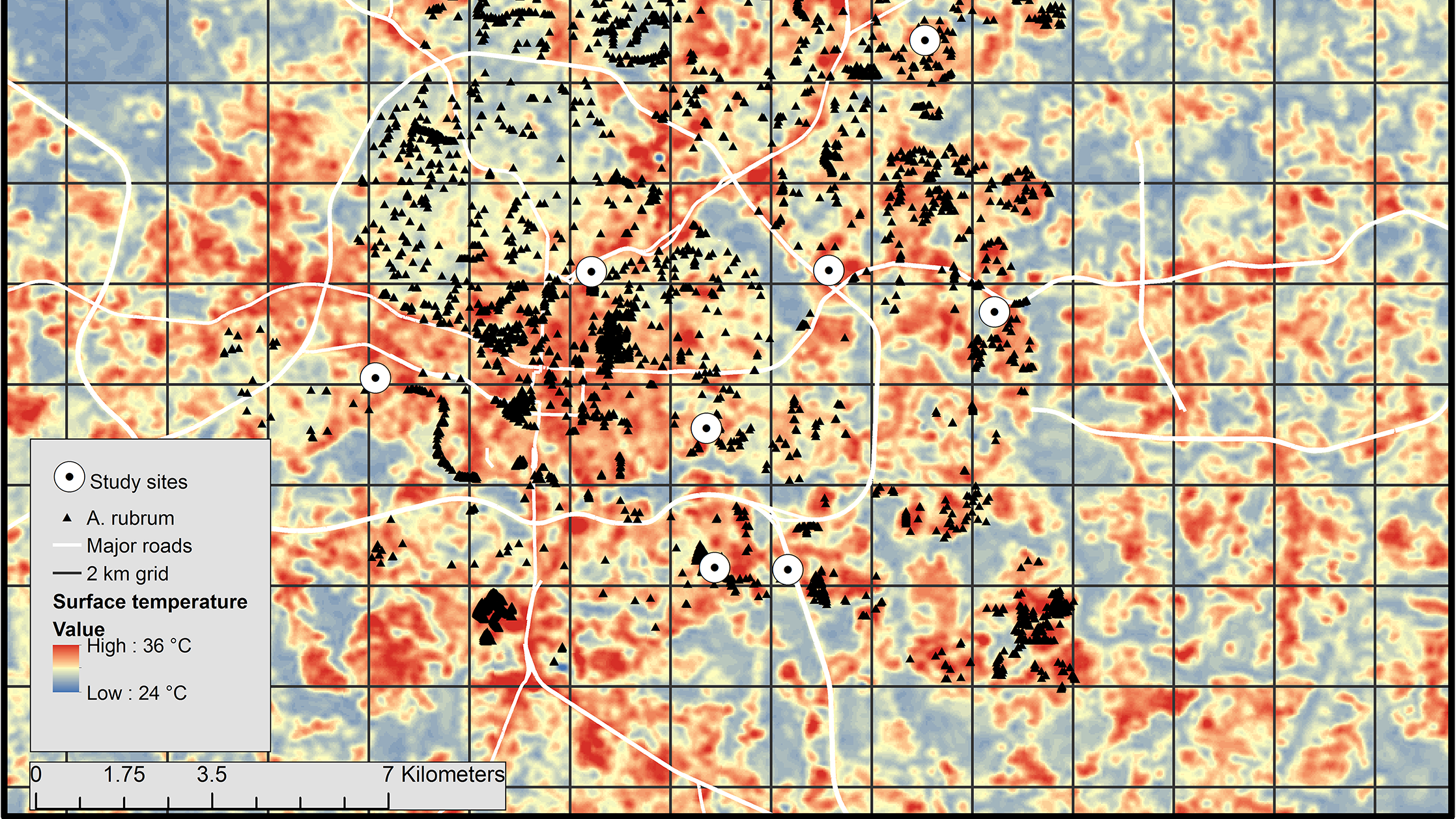Gloomy Predictions: New Article Shows That Heat and Drought Combine to Increase Pest Outbreaks


Results of Southeast CSC research have just been published in the online journal PLOS ONE. The work was conducted by NCSU faculty Steve Frank and former SE CSC Global Change Fellow Adam Dale when he was a graduate student at NCSU. Dale is now on the faculty at University of Florida.
Following is re-posted from a news release by Brad Buck, University of Florida Institute of Food and Agricultural Sciences.
They are known as gloomy scales, and these insects can make a red maple tree’s life downright dreary. This is because the arthropods feed and thrive on them, especially in warm and dry urban landscapes, a University of Florida Institute of Food and Agricultural Sciences researcher says.
Melanaspis tenebricosa, or gloomy scale insects, reproduce more, especially when the trees they live on are under the stress of heat and drought, according to new study led by UF/IFAS entomology assistant professor Adam Dale.
Dale’s new research is important as residents and urban landscapers decide when and where to plant red maple trees, which are native and widely distributed in North America from Florida to Canada and whose canopy helps cool urban areas.
Dale conducted the study in Raleigh, North Carolina when he was a doctoral student at North Carolina State University. He wanted to know how the gloomy scale, an insect widely distributed around the eastern and southeastern U.S., would respond to hot, dry weather – conditions typical for urban trees. Researchers studied urban red maple trees at various temperatures around the city. Then they irrigated half the trees twice a week during the summers of 2014 and 2015.
At the end of 2015, they collected gloomy scales from each tree, measured their body size, dissected them and counted the number of eggs the insects produced, Dale said. They then looked at the relationship between the temperature in the tree’s canopy and whether the tree was irrigated. Scientists wanted to see if either factor had an effect on the insects’ body size or egg production.
The hotter and drier the trees were, the more eggs the gloomy scales produced.
“This insect is drastically more abundant on urban than rural trees throughout the southeastern U.S.,” Dale said. “It reduces the health of these trees along with the services they provide to people and the environment.”
In many ways, this native pest acts like an invasive insect when it is in urban landscapes, he said.
“This pest can severely damage and kill trees that it feeds on,” Dale said. “Plus, its favorite host tree is the most common urban landscape tree in the eastern U.S. Since the gloomy scale benefits from warming and drought — two features common to urban landscapes — and urban landscapes are rapidly expanding, there is a potential for this pest to proliferate and cause even more problems in the future.”
Urban foresters and landscape architects can use the study’s findings by selecting more appropriate trees to be planted where heat and drought stress may be likely, Dale said. The research holds practical implications for urban residents, too.
“Sites that are surrounded by more impervious surfaces — roads, parking lots, buildings and more — and thus warmer and drier, are not the most suitable sites for these trees,” Dale said. “If they are in such sites, irrigating during the warmest months to reduce drought stress can help manage these pests.”
Dale will continue to work on this research in Gainesville, Florida, with scientists from N.C. State and the U.S. Forest Service in Gainesville during the next few years, with funding from the U.S. Department of Agriculture.
